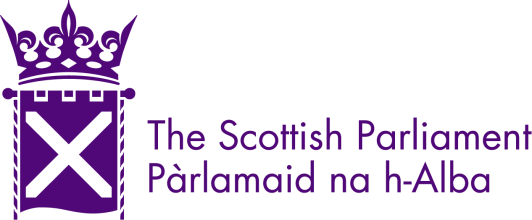Each week we publish the text of our Gaelic Word of the Week podcast here with added facts, figures and photos for Gaelic learners who want to learn a little about the language and about the Scottish Parliament – Pàrlamaid na h-Alba. This week we are looking at Easter – A’ Chaisg.
It is currently the Scottish Parliament’s recess – fosadh for Spring – an t-Earrach. This means that the Parliament won’t be sitting again until after the election – taghadh – in May.
During the Spring recess – fosadh – Easter will be taking place.
The Gaelic for Easter is A’ Chàisg. As well as meaning the Christian celebration of Easter, a’ Chàisg also means the Jewish celebration of the Passover. A’ Chàisg is connected to the Latin word pascha which in turn comes from the Hebrew Pesah or Passover.
Good Friday in Gaelic is Dihaoine na Ceusta which means ‘The Friday of the Crucifixion’.
Many Gaelic-speaking Christians will be reading the bible at Easter – A’ Chaisg.
The Scottish Gaelic New Testament was first translated in 1767 and the Old Testament in 1801. Before this, the bible in Irish – Gaeilge – was used in Gaelic Scotland.
As well as being important to Christians for spiritual purposes, the Gaelic Bible did a tremendous amount to standardise the language and create a high register shared by speakers of all Gaelic dialects. It was also a major factor in driving literacy in Gaelic. To this day, the Gaelic Bible is a useful resource for translators and the Parliament’s Gaelic team often use it for terminology.
The Gaelic of the Bible is today seen as rather old-fashioned, however, and many Gaelic speakers find it difficult to understand. For this reason, a new version of the New Testament in contemporary Gaelic was published in 2017 following a long-term project to translate it from the original Greek to modern Gaelic.
Another word connected with a’ Chàisg – is an easter egg. The Gaelic for egg is ugh.
The Scottish Parliament – Pàrlamaid na h-Alba – has a very special egg – ugh. This isn’t an Easter egg – ugh càisge, however, but a giant sculpture of a pink footed goose egg.

This sculpture, entitled granite egg was gifted to the Scottish Parliament – Pàrlamaid na h-Alba – in 2004 by the Icelandic Parliament. This was created by Sigurdur Gudmundsson.
The Gaelic for Iceland is Innis Tìle.
The design of this granite egg sculpture is an enlarged version of a real pink-footed goose egg. The egg – ugh – can be seen as symbolic of the friendship between the Icelandic and Scottish Parliaments, as the pink-footed goose spends winter in Scotland – Alba – and summer in Iceland – Innis Tile. Carved into the egg – ugh – is a phrase which translates as ‘With laws the land shall be built’, a phrase that was used in Icelandic saga. Another interesting connection between the two countries is that that this is also the motto of Shetland – Sealtainn.

For more easter terminology, see the LearnGaelic website.
Finally, while we were reseraching this weeks Word of the Week, we found this entry in Dwelly’s dictionary for Maundy Thursday about an old custon on that day in Lewis – Leòdhas and Harris – na Hearadh:
DiarDaoin a’ bhrochain mhóir, Maundy Thursday. It was at one time a custom in the Long Island, if the usual drift of seaweed were behind time, to go on Maundy Thursday and pour an oblation of gruel on a promontory, accompanying the ceremony by the repetition of a certain rhyme.
This week’s Gaelic Word of the Week is Easter – a’ Chàisg.
A’ Chàisg
Have a happy Easter everybody – Càisg shona!
Alasdair MacCaluim
Alasdair.MacCaluim@parlialment.scot
